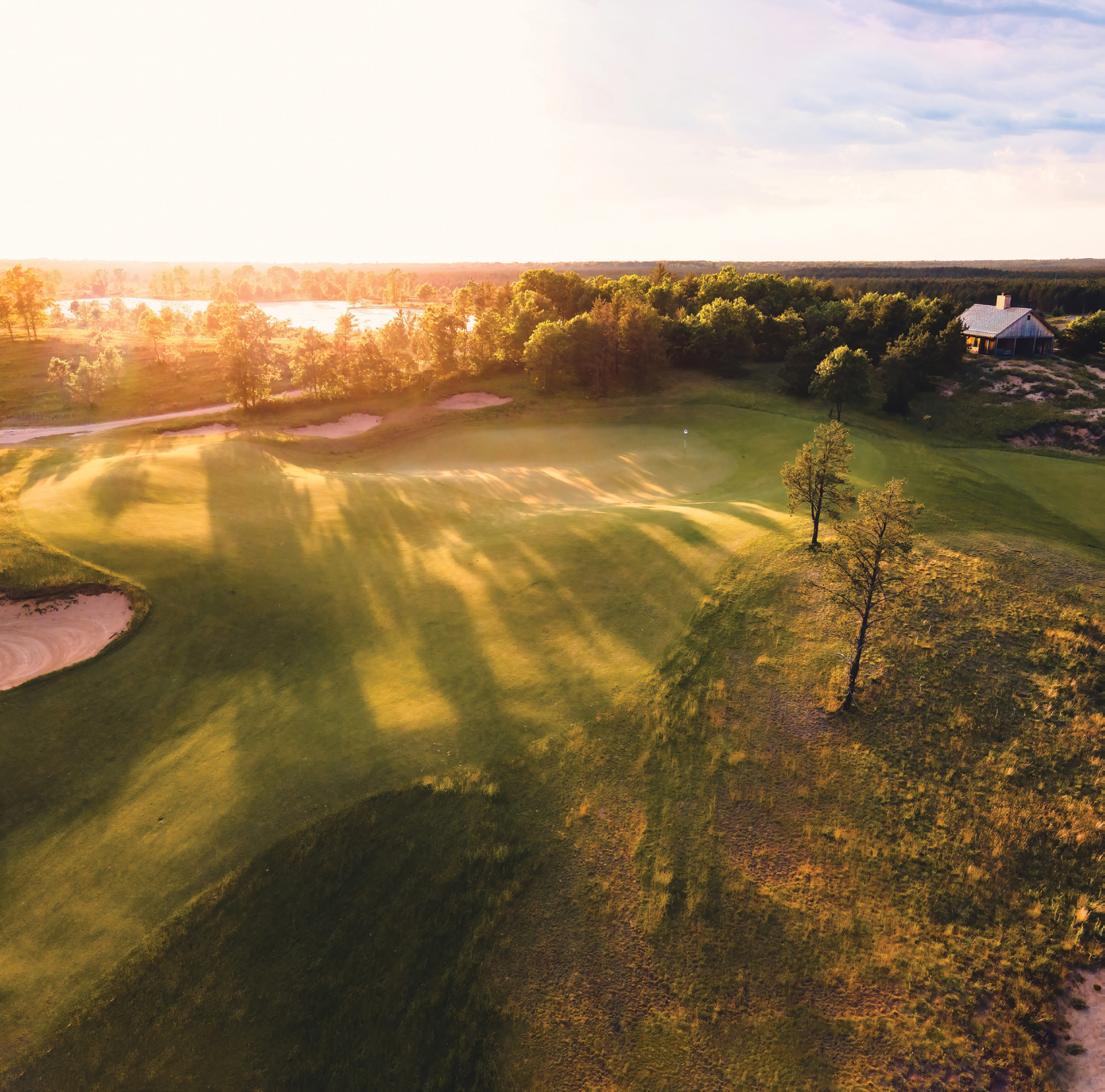
4 minute read
Final Putt
Dan Vukelich Before Super Mex Got His Cape
It was either 1988 or 1989. I had ridden up from Washington, D.C., where I was working as a newspaper reporter, to play in a shotgun scramble sponsored by a Pittsburgh bar. I had bungeed my putter to the frame of my BMW road bike for the trip.
Advertisement
The putter was a bit of theatrical flash for my Pittsburgh teammates, but I was running late. From the tee of the third hole, which bordered the parking lot, they saw me roll in and hollered to hurry it up. I hopped off the bike, grabbed the driver from a rental set my brother had gotten and banged off a drive, a worm burner. And off we went.
We had a grand time, with lots of yucks. During the luncheon, I hit the john. Coming out was a local guy who was the spitting image of Lee Trevino. I said as much to him as we passed one another and he stopped dead, turned, and stared me down as if I had just delivered a terrible racial slur. Never in my wildest dreams would I have thought likening a guy to a six-time major winner would be an insult.
But this was rural southwestern Pennsylvania where to some, apparently, Super Mex wasn’t so super.
Years later, as editor of the statewide golf magazine in New Mexico, where I live now, I came to learn more about Trevino, who had a unique and enduring connection to the area. In addition to his two U.S. Open wins, two British Open victories, and two PGA championships — 29 PGA Tour wins overall — Trevino had notched wins at the 1966 and 1972 New Mexico Open.
I later learned that Trevino donated his 1972 New Mexico Open winnings to the New Mexico chapter of the Southwest Section of the PGA of America. The money helped the New Mexico and El Paso County, Texas, pros defray the cost forming their own group — the Sun Country PGA Section.
Soon, more tidbits about Trevino’s connection to New Mexico emerged. He was on hand for the 1979 opening of a course in Elephant Butte, N.M., and he designed one nine of the [now-defunct] 27-hole Rio Rancho [N.M.] Country Club outside of Albuquerque.
It wasn’t until I came to know one of the freelance writers at the magazine did I realize the full extent of Trevino’s connection to New Mexico and El Paso. The late Guy Wimberly, a longtime local pro, explained how a small group of guys in West Texas and New Mexico helped Trevino get admitted to the PGA Tour.
In the 1960s, Trevino wasn’t yet the trailblazing Mexican-American icon he would become. He was an assistant working at an El Paso driving range whose chief duty was picking the range at night.
Before long, his golf game led to his recruitment into a money game organized by El Paso and Las Cruces-area cotton and chile farmers. His mentors tried to pass their ringer off as a Mexican farm worker, a tractor driver. Their cover story lasted until Trevino’s first tee shot.
Among the game’s regulars were Guy’s brother, Herb Wimberly, who later would become the New Mexico State University golf coach, and Bill Eschenbrenner, an El Paso pro. The two men, plus others, suggested Trevino had the game to make it on tour.
The problem, however, was Trevino’s boss at the driving range. He wouldn’t write a letter of reference to the PGA of America — which ran the PGA Tour at the time — attesting to Trevino’s character. It was a letter that Trevino needed to gain admission to the PGA Tour. And the answer from his boss was a firm no.
Whether it was racism or Trevino’s penchant for gambling that was behind the refusal is unclear. Locals only remember that the pro told anyone who asked that he didn’t think Trevino would make a good PGA professional.
To help Trevino, Eschenbrenner hired him as an outside services worker at the El Paso club he ran at the time. At one point, Raymond Floyd flew in for a match that had been arranged at the club. As Trevino unloaded Floyd’s bag, Floyd asked who he’d be playing. “Me,” Trevino said. Super-Mex won the match and his legend began to grow.
Eschenbrenner, Herb Wimberly, and a few others petitioned the PGA on Trevino’s behalf making the case for him to join the PGA Tour. After a lot of letter writing and some bureaucratic smoke and mirrors, Trevino was admitted to the PGA Tour.
The entirety of the story explained Trevino’s long-term affinity for New Mexico and El Paso. To this day, pros in the region say that if Eschenbrenner, now a member of the Texas and PGA of America golf halls of fame, were to pick up the phone to ask Trevino to get on a plane and play someone sight unseen, Super Mex would be there.
So much has changed in golf since the bad old days when men like the El Paso driving range pro held sway, and even since the guy in Pennsylvania did his double take. I still get the whiff and occasional nosefull of racism, even in a state where Hispanics have lived almost 200 years before the American revolution. But golf has indeed been making progress. Dan Vukelich, a former Chicagoan and a member of the Golf Writers Association of America and the Golf Travel Writers of America, lives in Albuquerque, N.M. Whether it was
racism or Trevino’s
penchant for
gambling that was
behind the refusal
is unclear. Locals
only remember that
the pro told anyone
who asked that he
didn’t think Trevino
would make a good
PGA professional.
(844) 266-5124 sandvalley.com






